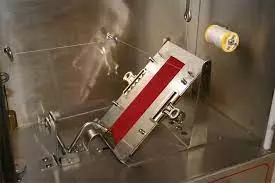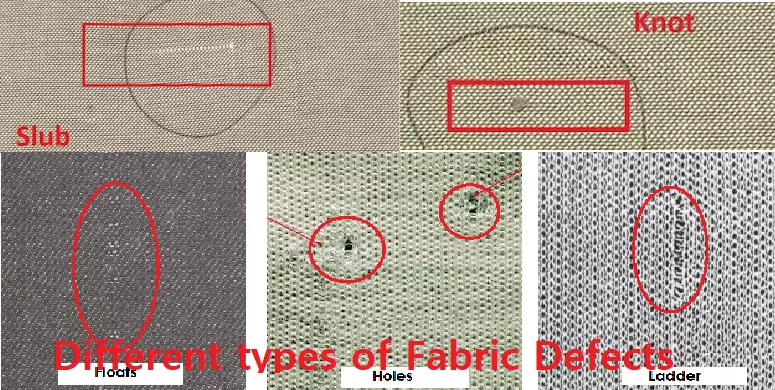Fabric is an essential material used in various industries, ranging from textiles and fashion to automotive and home furnishings. However, the flammability of fabrics poses a significant safety concern. To ensure consumer safety and compliance with industry regulations, rigorous flammability testing is crucial. In this article, we will delve into the world of flammability testing for fabrics, understanding its importance, various test methods, and how it helps in ensuring safety and compliance
Textile testing plays a big role in determining fabric quality. Fabrics have to go through lots of different testing to qualify for clothing. Among different types of Fabric testing, the Flammability test for Fabric is an important test. Flammability testing is an essential process to evaluate the fire resistance properties of the fabric and determine its suitability for various applications. In this article, we will explore the flammability test for fabric, its importance, and the methods used to assess the fire safety of different textile materials.
What is Flammability Testing in Fabric?
Flammability testing is a scientific evaluation conducted to assess the behavior of fabric when exposed to flames or ignition sources. It helps determine how easily a fabric can catch fire, sustain combustion, and propagate flames. This testing process is crucial to ensure the safety of consumers and minimize the risk of fire-related incidents.
Importance of Flammability Testing in the Textile Industry
Flammability testing is of utmost importance for fabric manufacturers, designers, and end-users. It enables the identification of potentially hazardous materials, ensuring that only fire-safe fabrics are used in products available on the market. By complying with flammability standards, manufacturers can provide consumers with textiles that meet the necessary safety requirements.
In the textile industry, flammability testing ensures that clothing, especially children’s sleepwear, meets stringent safety standards. It helps manufacturers produce flame-resistant garments that protect wearers from burn injuries.
Key Factors Affecting Fabric Flammability: Several factors contribute to the flammability of fabric, including fiber content, fabric construction, finishing chemicals, and fabric thickness. Understanding these factors helps manufacturers in designing safer products.
Flammability Test Standards and Regulations: Various organizations and regulatory bodies have established flammability test standards to ensure consistent and reliable testing procedures. Some of the widely recognized standards include:
- ASTM D6413 Test Method The ASTM D6413 test method measures the flame resistance of textiles using vertical flame exposure. This test evaluates the fabric’s ability to self-extinguish after the removal of the flame source.
- NFPA 701 Standard The NFPA 701 standard is specifically designed for fabrics used in public spaces, such as curtains and draperies. It determines the fire resistance properties of textiles when exposed to a small ignition source.
- California Technical Bulletin 117 California Technical Bulletin 117 focuses on upholstered furniture and requires testing for flame resistance. The standard assesses the fabric’s resistance to ignition from small open flames, smoldering cigarettes, and other heat sources.

Types of Flammability Tests
Flammability tests are conducted using various methods, each addressing specific aspects of fire safety. The most common types of flammability tests include:
- Vertical Flammability Test The vertical flammability test evaluates how a fabric performs when exposed to a vertically oriented flame. It measures the time it takes for the flame to spread and the extent of flame propagation.
- Horizontal Flammability Test The horizontal flammability test assesses the fabric’s resistance to flame spread when exposed to a horizontal flame source. This test is crucial for materials used in bedding and upholstered furniture.
- Radiant Panel Test The radiant panel test measures the heat release rate and flame spread properties of fabric when exposed to radiant heat. This test simulates real-world fire scenarios and helps assess the fabric’s fire resistance capabilities.
The Flammability Testing Process
Flammability testing involves a systematic process to ensure accurate and consistent results. The process typically includes the following steps:
- Sample Preparation Samples of the fabric are prepared according to the specified dimensions and conditioning requirements. It is important to ensure that the samples represent the fabric’s actual use conditions.
- Test Apparatus The testing apparatus consists of a controlled flame source, a specimen holder, and a data collection system. The apparatus is designed to provide standardized conditions for testing.
- Test Procedure The fabric samples are exposed to the controlled flame source for a specified duration. The flame spread, ignition time, and other relevant parameters are recorded during the test.
Understanding Test Results
Flammability test results provide valuable insights into the fabric’s fire safety properties. Two key parameters assessed during flammability testing are:
- Flame Spread Rating The flame spread rating indicates how quickly the flame spreads across the fabric. A lower flame spread rating suggests better fire resistance properties.
- Limitations of Test Results It is important to note that flammability testing provides specific information about a fabric’s performance under controlled conditions. Real-world scenarios may differ, and additional precautions may be necessary.
The Flammability Testing Process
Flammability testing involves a systematic process to ensure accurate and consistent results. The process typically includes the following steps:
- Sample Preparation Samples of the fabric are prepared according to the specified dimensions and conditioning requirements. It is important to ensure that the samples represent the fabric’s actual use conditions.
- Test Apparatus The testing apparatus consists of a controlled flame source, a specimen holder, and a data collection system. The apparatus is designed to provide standardized conditions for testing.
- Test Procedure The fabric samples are exposed to the controlled flame source for a specified duration. The flame spread, ignition time, and other relevant parameters are recorded during the test.
Understanding Test Results:
Flammability test results provide valuable insights into the fabric’s fire safety properties. Two key parameters assessed during flammability testing are:
- Flame Spread Rating The flame spread rating indicates how quickly the flame spreads across the fabric. A lower flame spread rating suggests better fire resistance properties.
- Limitations of Test Results It is important to note that flammability testing provides specific information about a fabric’s performance under controlled conditions. Real-world scenarios may differ, and additional precautions may be necessary.
Conclusion
Flammability testing is a critical aspect of ensuring consumer safety and compliance in the textile, automotive, and furniture industries. Through various testing methods and standards, manufacturers can evaluate the fire safety properties of fabrics and materials accurately. By adhering to flammability regulations, producers can provide consumers with fire-resistant products, reducing the risk of injuries and property damage. As advancements in flammability testing continue, the industry moves closer to safer and more sustainable solutions.


